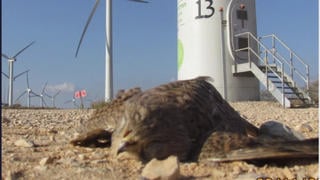
Was the word "mummy" banned in British museums to avoid "dehumanising" the remains? No, that's not true: As of this writing, The British Museum still used the word to describe exhibits. Yet at least two other U.K. museums decided to adjust their language and switched to a different term, "mummified person."
The underlying cause of the change was not an external ban imposed on cultural institutions by the British government. Instead, it was an attempt to acknowledge the problematic aspects of how Westerners treated ancient human remains in the past. However, even the two British museums that decided to use "mummified person" still allow the use of "mummy" as an adjective when it refers to objects such as a "mummy mask."
The claim appeared in a post on Facebook on January 30, 2023. It said:
The word 'mummy' has been banned in British museums
This is what the post looked like at the time of writing:
In a subsequent comment, the administrator for North Yorkshire Live posted:
Curators are being told to refer to them as 'mummified people' because it is less 'dehumanising'
As of February 2, 2023, the word "mummy" and its plural form, "mummies," appeared on the website of The British Museum in London:
(Source: British Museum screenshot taken on Thu Feb 2 17:03:11 2023 UTC)
Earlier, on January 26, 2023, a British Museum spokesperson told Reuters that the institution uses the terms "mummy" and "mummified remains" interchangeably and doesn't plan to abandon the word "mummy."
However, some other U.K.-based museums did decide not to use the word "mummy" as a noun.
A spokesperson for National Museums Scotland told Lead Stories via email on February 2, 2023:
Where we know the name of an individual we use that, otherwise we use the term 'mummified man, woman, boy, girl or person' on our labels, because we are referring to people, not objects. The word 'mummy' is not incorrect, but it is dehumanising, whereas using the term 'mummified person' encourages our visitors to think of the individual. We use 'mummy' as a descriptive adjective for objects; the terms 'mummy mask', 'mummy case' and 'mummy bandage' are all used on our labels. The ancient Egyptians themselves referred to mummified people as 'noble/honoured ones'. The term 'mummy' is modern, rather than ancient.
According to the spokesperson, the museum implemented this approach in 2017.
The Great North Museum: Hancock is another museum that has made the same change. In a February 3, 2023, email to Lead Stories, Adam Goldwater, manager of the Great North Museum: Hancock, attributed the change to an ongoing effort "to delve more deeply into the origins of these collections" and to describe and use them "in respectful ways" that share "information from the perspective of their original community."
Goldwater added, however, that the term "mummy" is not incorrect. He wrote:
We have adopted the term 'mummified woman' because we know the name of the individual - and we are referring to a real person, not an object. The word 'mummy' is not incorrect, but it can be dehumanising. Legends about the 'mummy's curse' and movies portraying supernatural monsters can undermine their humanity.
Back in May 2021, Jo Anderson, an assistant keeper of archeology at the Great North Museum: Hancock, elaborated about the origins of the word "mummy" to explain the decision:
Dr. Margaret Maitland, Principal Curator of the Ancient Mediterranean at National Museums Scotland, has demonstrated to me how the word 'mummy' has a colonial past -- it's derived from the Arabic word 'mummiya' which means 'bitumen'. This is a reference to the 18th and 19th centuries when mummified remains were collected in vast numbers and broken up to provide ingredients for things like medicine and paint ...
By using terms such as "mummified person", we can begin to change our outlook and see these remains for what they really are -- not objects or curiosities, but real humans who were once alive and had very specific beliefs about how their bodies should be treated after death.
As of this writing, the Great North Museum: Hancock describes an Egyptian coffin on loan from the British Museum as the former property of "an Ancient Egyptian Lady known as Seshepenmehyt." It does not use the word "mummy."
Additional Lead Stories fact checks of claims related to a "mummy" and "mummified remains" can be found here and here.


















